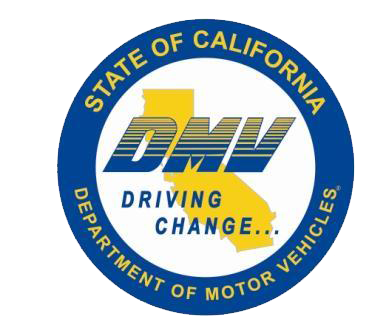FMCSA Looking to Change How it Determines Motor Carrier Safety Fitness
The Federal Motor Carrier Safety Administration is asking for comments to help it develop a new way to determine when a motor carrier is not fit to operate commercial motor vehicles, also known as a safety fitness determination.
In an advance notice of proposed rulemaking, FMCSA is asking for public comment on:
- The need to revise the safety fitness determination process.
- The available science or technical information that would allow the agency to analyze alternatives for determining the safety fitness of motor carriers.
- Feedback on FMCSA’s current safety fitness determination regulations, including the process and impacts.
- The available data and costs for regulatory alternatives reasonably likely to be considered as part of this rulemaking.
- Responses to specific questions in the ANPRM.
Current Safety Fitness Determination Process
Safety Fitness Determinations currently are determined based on an analysis of existing motor carrier data and data collected during an investigation (referred to as a “compliance review” or more casually as a “DOT audit.”)
It analyzes six factors based on the Federal Motor Carrier Safety Regulations (FMCSRs) and Hazardous Materials Regulations:
- General
- Driver
- Operational
- Vehicle
- Hazmat
- Accident factor (recordable accident rate per million miles)
FMCSA calculates a vehicle out-of-service rate, reviews crash involvement, and conducts an in-depth examination of the motor carrier’s compliance with the acute and critical regulations of the FMCSRs and HMRs.
“Acute regulations” are those where noncompliance is so severe as to require immediate corrective action, regardless of the overall safety management controls of the motor carrier. “Critical regulations” are related to management or operational systems controls.
CSA and Safety Fitness Determinations
One of the criticisms of this process is that it is resource-intensive and reaches only a small percentage of motor carriers.
The agency has long hoped to link its Compliance, Safety, Accountability program and its Safety Measurement System to fitness reviews. The SMS is FMCSA’s prioritization system to identify motor carriers for investigation, which went into effect in 2010.
In 2016, FMCSA proposed using a carrier’s absolute measure, but not its relative percentile ranking, in SMS to generate unfit safety fitness determinations. The idea was to more effectively use FMCSA data and resources to identify unfit motor carriers and remove them from the roads, expanding the number of assessed and rated carriers.
That proposal also looked at eliminating the current rating terms of Satisfactory, Unsatisfactory, and Conditional and transitioning to a single determination of Unfit. The agency noted that a carrier getting a Satisfactory safety rating may be misconstrued as an FMCSA approval of the current operations of a motor carrier, when instead, it reflects FMCSA’s evaluation of a motor carrier’s operations at the time of the investigation. And under the current SFD process, a motor carrier with a Conditional rating is not prohibited from operating, even if a review reveals breakdowns in safety management controls in multiple areas.
Motor carriers generally opposed that proposal, saying there were problems with the SMS data that needed to be fixed before it could be used in this manner. And, they said, it violated the Fixing America’s Surface Transportation (FAST) Act. In 2017, FMCSA withdrew the 2016 SFD proposed rule but left the door open to revisiting it in the future.
What Happened to Item Response Theory (IRT)?
The FAST Act required the National Academy of Sciences to conduct an independent study of SMS.
The NAS report, issued in 2017, did find shortcomings. Its main recommendation was that FMCSA develop a complex statistical model known as item response theory. It was believed this system would better measure a carrier’s overall safety culture, rather than the current snapshot-in-time approach for safety determinations.
While initially expressing optimism about the potential for the item response theory model, after developing and testing an IRT model, FMCSA concluded that IRT modeling does not perform well for use in identifying motor carriers for safety interventions.
Instead, last year it issued a proposal to revamp the current CSA/SMS model. Those improvements include reorganizing the BASICs to better identify specific safety problems, combining the 958 violations used in SMS in 116 violation groups, simplifying violation and crash severity weights, removing percentile jumps that occur when carriers move into a new safety event group, and adjusting the intervention thresholds.
What FMCSA Wants to Know
FMCSA specifically requests responses to the following questions regarding how it does safety fitness determinations:
- Should FMCSA retain the current three-tiered rating system of Satisfactory, Unsatisfactory, and Conditional? Why or why not?
- Should FMCSA include additional hazmat regulatory requirements in the SFD calculation?
- Currently, the table of regulatory factors excludes parts 172 and 173. However, there are violations in these parts included in the list of critical and acute violations in Appendix B. Should they be included in the SFD calculations?
- Should motor carriers of passengers be subject to higher standards than other motor carriers in terms of safety fitness rating methodology?
- Is there a specific aspect of safety management, such as driver training, driver fatigue management and mitigation, vehicular maintenance and repair, etc., that is so fundamentally different in passenger transportation from freight carriers that FMCSA’s safety fitness rating methodology should take this aspect into special consideration?
- How will states be affected? What resources might be needed to accommodate any changes, and how long would it take to incorporate any proposed changes?
- The current SFD does not use all available safety data, such as all inspection-based data. Should the SMS methodology be used to issue SFDs, in a manner similar to what was proposed in the 2016 NPRM? If so, what adjustments, if any, should be made to that proposal? If not, should the agency include more safety data in the SFD process in other ways and, if so, how?
- Given the importance of driver behavior in preventing crashes, how would you recommend the agency incorporate driver behavior data into the SFD process?
- What changes, additions, or deletions, from the current list of critical and acute violations should be included? Why or why not?
- Should SFD consider motor carriers’ adoption and use of safety technologies in a carrier’s rating? How should this fit into the SFD methodology? (This appears to be a revisit of a stalled initiative known as “Beyond Compliance” that FMCSA proposed in 2016, which would have given “extra credit,” so to speak, to motor carriers that install advanced safety equipment; use enhanced driver fitness measures; adopts fleet safety management tools, technologies, and programs.)
- Should the agency revise the current administrative review procedures?
- Given that unsafe driving behaviors, such as speeding and texting while driving, are highly correlated with crash risk, should the safety fitness rating methodology give more weight to unsafe driving violations?
Concerns About the Safety Fitness Determination Proposal
Trucksafe Consulting in a blog post called the proposal “concerning … for many reasons.”
“Many studies over the years have demonstrated significant flaws with SMS, flaws which we do not feel the agency adequately addressed in its recently-proposed SMS revisions," wrote transportation attorney Brandon Wiseman.
"Significantly, SMS, as currently structured (and even with the proposed changes) offers carriers no meaningful due process to contest or appeal erroneous violations or other data that weighs on their scores. Thus, it's conceivable a carrier's safety rating (and its ability to continue to operate) could be threatened by incorrect violations or other problematic SMS data, with no real way for the carrier to address it before receiving a proposed Unfit safety rating."
Comments on this notice must be received on or before 60 days after date of publication in the Federal Register, referring to docket number FMCSA-2022-0003.
Content Disclaimer: Due to the constantly changing nature of government regulations, it is impossible to guarantee the total and absolute accuracy of the material contained herein or presented. NorthAmerican Transportation Association (NTA) cannot and does not assume any responsibility for omissions, errors, misprinting or ambiguity contained. NTA shall not be held liable in any degree for any loss, damage or injury caused by any such omission, error, misprinting or ambiguity present. It is made available with the understanding that NTA is not engaged in rendering legal, accounting or other professional service. If legal advice or other expert service is required, the services of such a professional should be sought.











